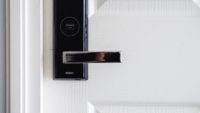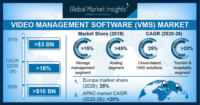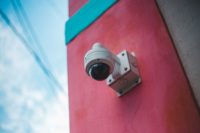According to ResearchAndMarkets.com, the United States video surveillance system market was valued at nearly $11 billion in 2020, and it is expected to reach $21.86 billion by 2026, registering a CAGR of 12.2 percent during the period of 2021-2026.
In the United States, surveillance cameras are most common among private-sector retail and commercial establishments, such as hotels, restaurants and office complexes. Amid the COVID-19 pandemic, the U.S. Transportation Security Administration put social distancing and several other safety measures into place at airport TSA checkpoints.
In March 2021, the Department of Homeland Security Science and Technology Directorate Silicon Valley Innovation Program announced $196,880 in Phase 1 funding to Deep North, a start-up based in Foster City, Calif., to utilize video analytics to airport screening processes to considerably minimize exposure and contact between passengers and transportation security officers.
The rising adoption of facial surveillance is gaining traction in the market. For example, Chicago and Detroit have adopted facial surveillance. Detroit’s million-dollar system can scan live video from cameras located at businesses, schools, health clinics, and apartment buildings, thus helping the police. Additionally, Detroit incorporated plug-in surveillance networks through its Project Green Light program. With Project Green Light, businesses include CCTV cameras and connect them to police headquarters. They further place a bright green light indication next to the cameras to imply they are part of the police network.
The region is also witnessing the rising adoption of smart home security cameras, which may further expand the scope of the market studied. AI-based video analytics further enhance efficiencies, offering many non-security-related insights for businesses, especially in smart city applications. In 2021, Amazon announced the AWS Panorama technology that enables integrators to work with a developer to easily create customized deep learning and video analytic apps for video surveillance cameras, regardless of manufacturer.
Further, according to the American Civil Liberties Union of Utah, privacy issues are rising as more cameras record capture clearer details of people’s daily lives. Also, major industry verticals are trusting surveillance as a better platform for altering the behavior of employees to yield better results. Corporate company’s surveillance tactics had extremely negative effects on employees, resulting in the emergence of privacy issues, increased stress, and the loss of identity. However, like any intrusive technology, the benefits of deploying public video cameras must be balanced against the costs and dangers.
Access the full report online.
.jpg?1634329412)





